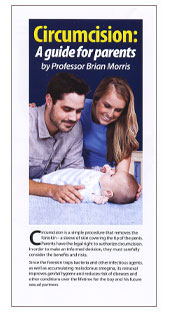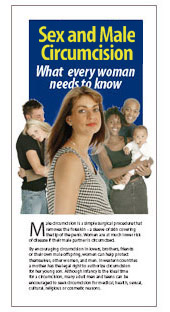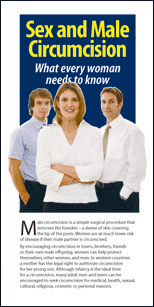Why are Human Males Born with a Foreskin?
Foreskin development begins at twelfth gestational week through a circular invagination of the ectoderm in the glandular periphery that grows ventrally and totally involves the glans around the twentieth gestational week. In the 2nd trimester of gestation, Favorito et al. [2012] found that the glans was partially covered by the foreskin in the fetus at 13 weeks post-conception and almost completely covered by the foreskin of fetuses at 16 and 17 weeks post-conception. The complete foreskin was formed only in fetuses at 18 and 19 weeks post-conception, at which time the foreskin totally covers the glans. In all the fetuses they studied they observed the presence of preputial lamella and a large amount of mesenchymal tissue between the foreskin and glans [Favorito et al. 2012]. This study supersedes older suggestions by Schoen [2007e]. Separation of the prepuce from the glans during development is completed in the 5thmonth of gestation [Diebert, 1933]. The foreskin has no role after birth. Complete absence of a prepuce in a healthy 5 day-old boy has, moreover, been reported [Temiz & Akcora, 2007]. There is no good evidence of any adverse effect of lack of a foreskin and in fact, as has been detailed in this review, we now know that the foreskin poses a risk to the male from various diseases and adverse conditions over his lifetime.
Nevertheless, one might speculate that the foreskin in primitive humans or pre-humans could have protected the head of the penis from long grass, shrubbery, etc when our primitive ancestors wore no clothes. Evolutionarily, our basic physiology and psychology are little different than our savannah-wandering or cave-dwelling ancestors tens or hundreds of thousands of years ago. It might also be speculated that the moist tip of an uncircumcised penis could have facilitated quicker penetration of a female. In those times, lengthy foreplay and intercourse might have been a survival disadvantage. One might expect that the risk to the copulators from predators and human enemies would have been greater the longer they were engaged in sexual intercourse.
But there is another possibility. In section 4 on the history of circumcision, Associate Professor Guy Cox from The University of Sydney reference is made to the possibility that the foreskin could in fact be the male equivalent of the hymen. It may have served as an impediment to sexual intercourse in adolescent primeval humans before the advent in our species of civilization and cultures [Cox, 1995]. Way back then, Cox says, the foreskin would have reduced “successful” sexual acts in those too young to adequately care for any offspring that might arise.
With the advent of civilization, Cox suggests that control of the sexual behavior of the young by society made the physical mechanism redundant and society introduced circumcision to free the individual from the impediment of having a foreskin. Interestingly, the physical difficulties experienced by the uncircumcised may explain why the word for uncircumcised in Hebrew means “obstruction” or “to impede”, so explaining the Biblical term “uncircumcised heart” when referring to obstructionism.



